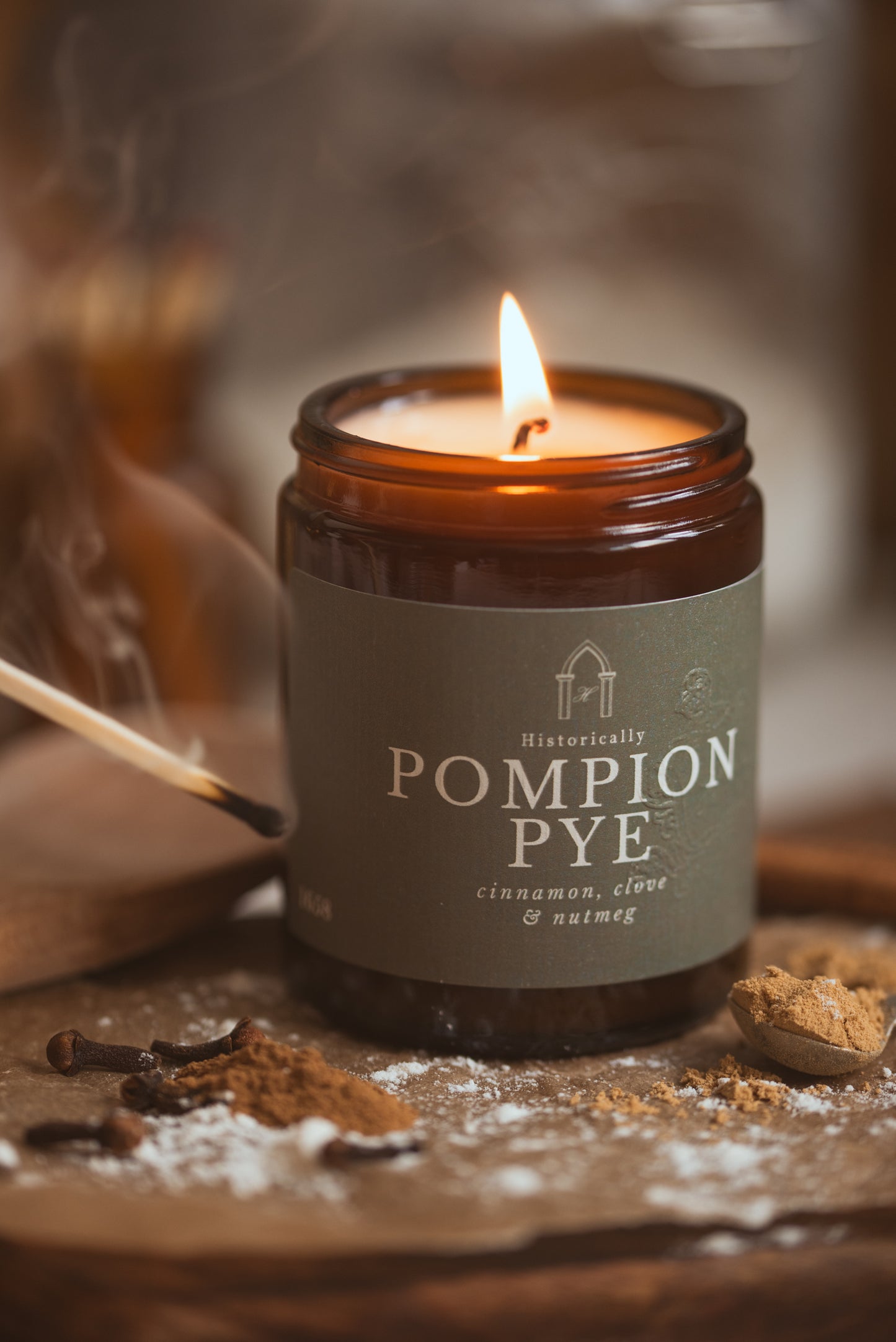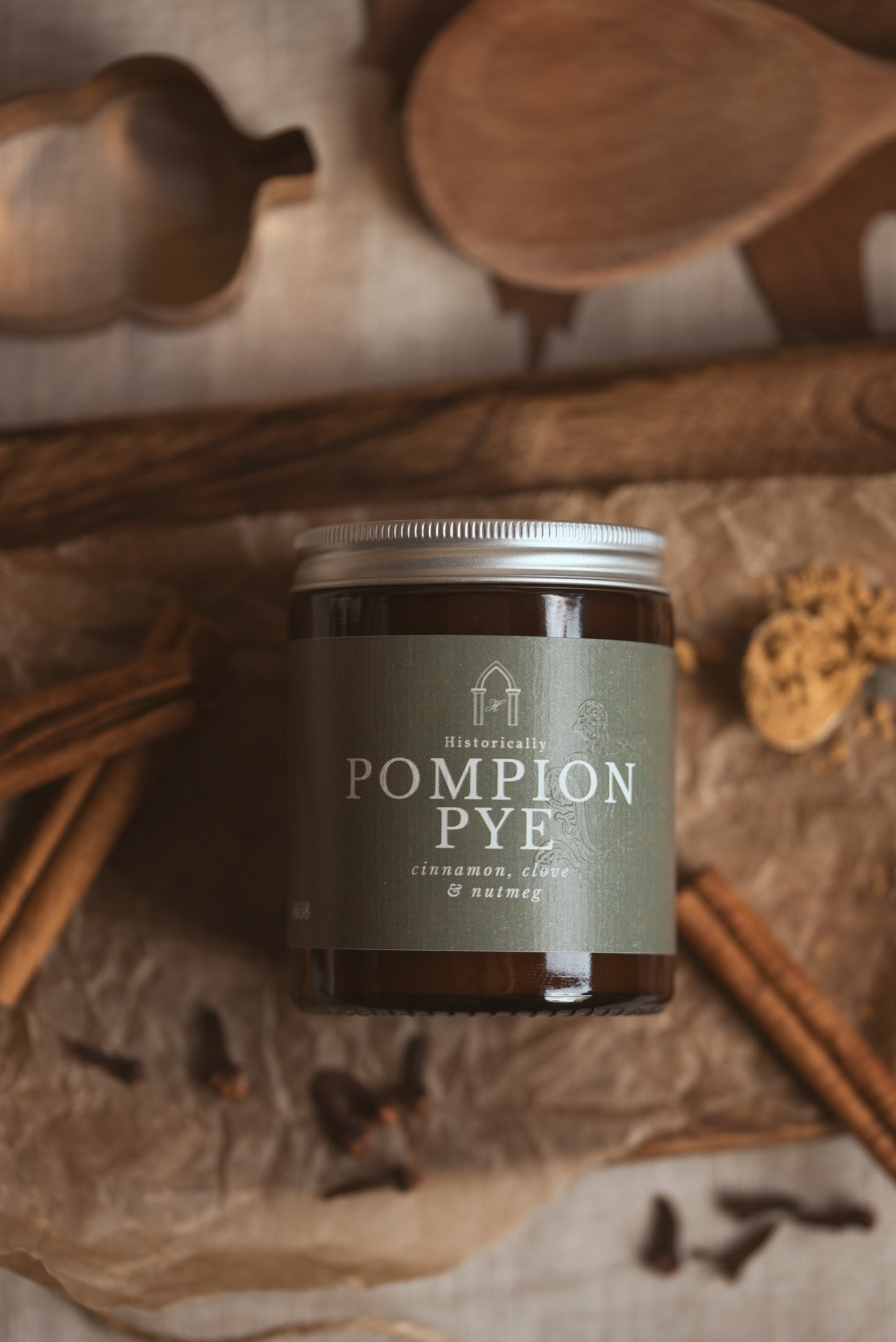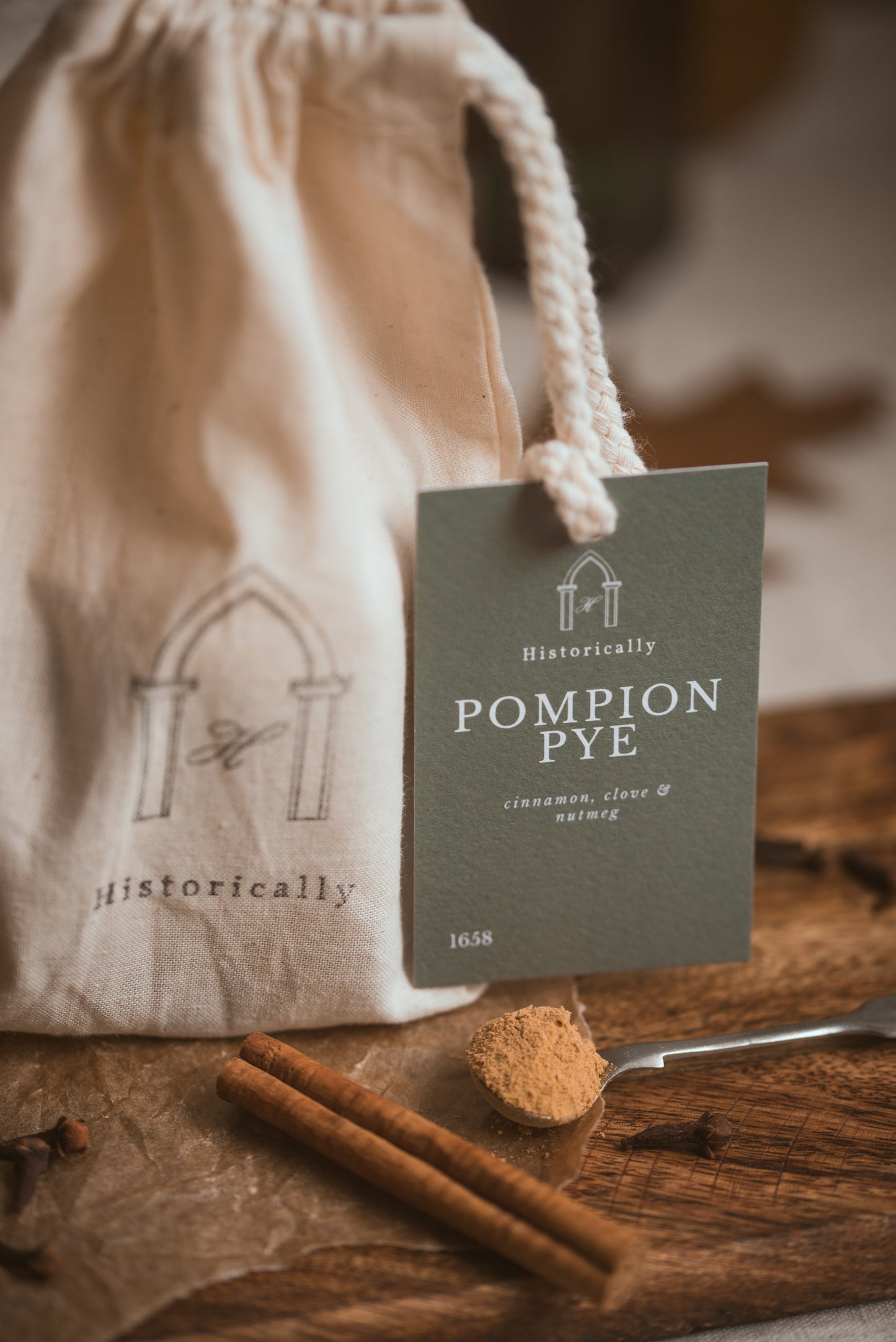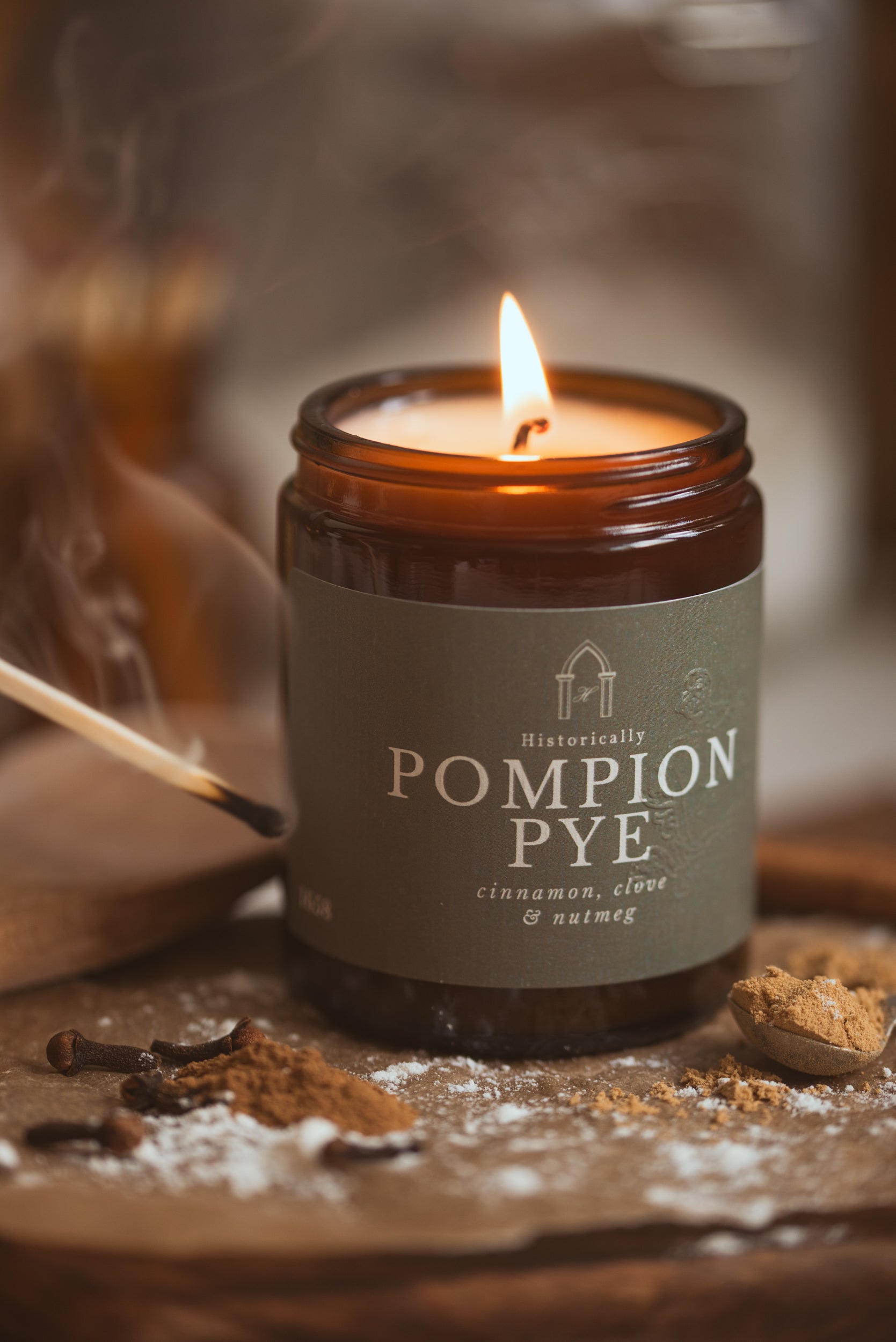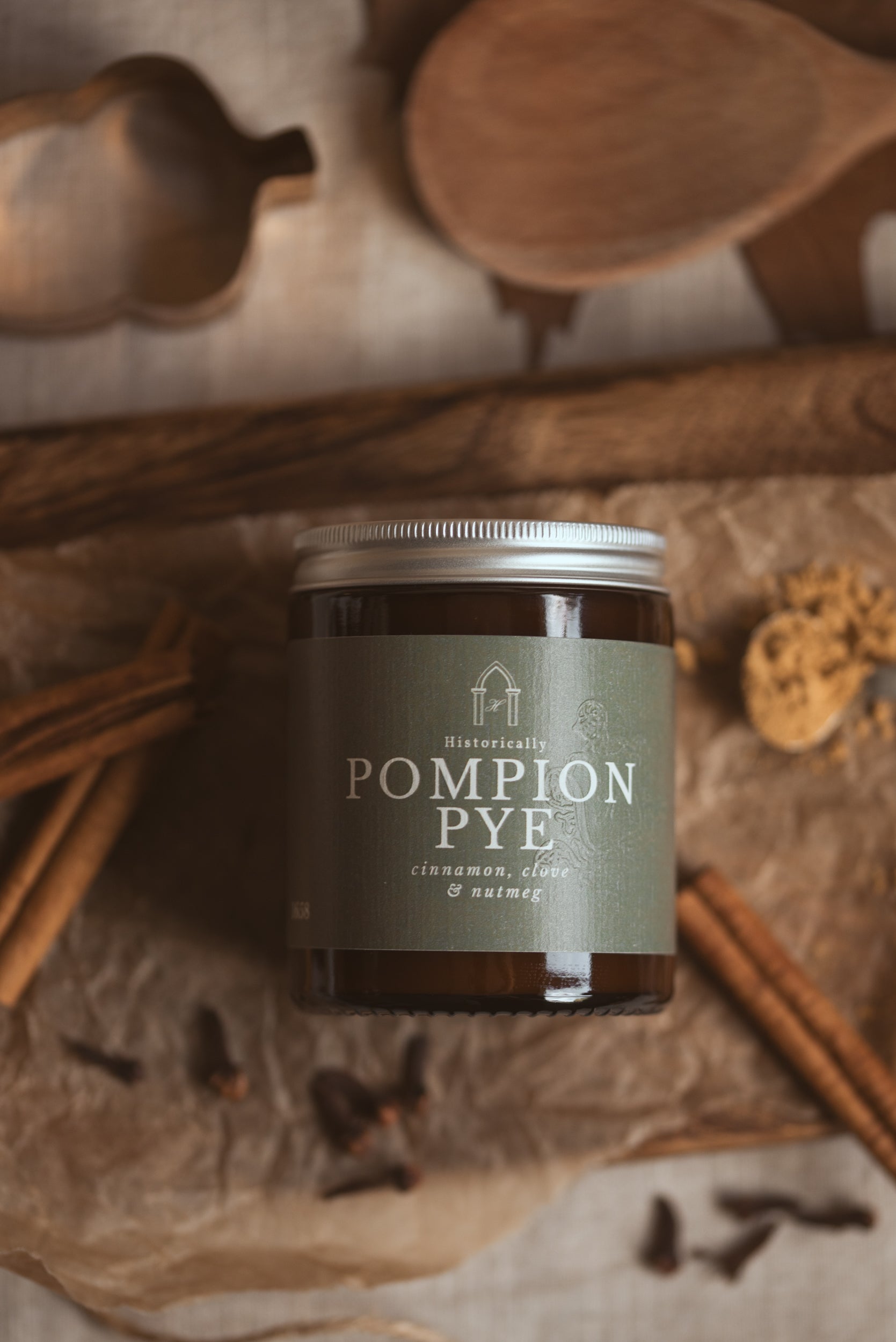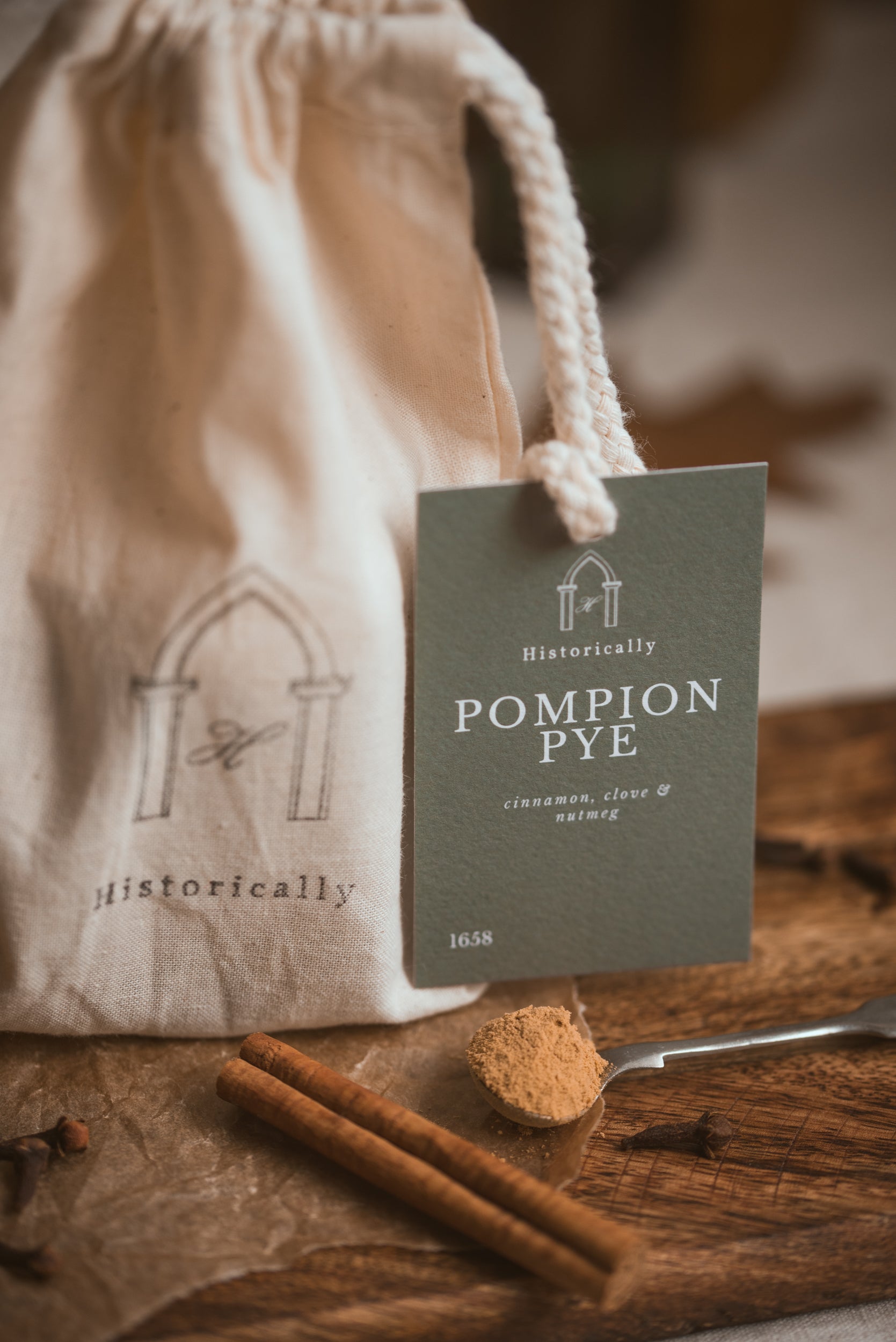Historically
Pompion Pye/Pumpkin Pie
Pompion Pye/Pumpkin Pie
Couldn't load pickup availability
Autumnal Harvest in Old England.
Steeped in the rich history of the UK's culinary past, this candle evokes the warmth of a 1650s kitchen where Hannah Woolley once crafted her the first pumpkin pie recipe. Aromatic cinnamon, spicy clove, and earthy nutmeg blend seamlessly to mimic the quintessential flavours of this early autumn treat. As the candle burns, it releases a comforting bouquet that conjures images of rustic pumpkin patches and the innovative spirit of English cookery. This scent not only celebrates the humble pumpkin's introduction to the UK from France but also honours the culinary creativity of the 17th century, inviting you to a sensory feast steeped in tradition.
Share
Scent Notes
Scent Notes
Cinnamon, clove & nutmeg
Delivery & Returns
Delivery & Returns
Dispatch times
Our candles are made to order and most will take between 1-7 business days to dispatch.
However, if you are wanting your order sooner or for a specific date please get in touch (via email or in the message box at checkout) and we can sort something out for you!
Delivery Times
We currently offer standard delivery with Royal Mail 2nd class which should arrive between 2-3 days after dispatch and Royal Mail 1st class which should arrive between 1-2 days after dispatch.
NOTE: Please note that during the months of November and December we use Royal Mail Tracked. This is more expensive than normal but we have found means that your parcels are safe and get to you in time.
Shipping outside the UK
We are more than happy to ship to America and Australia, unfortunately we cannot ship to the EU at this time.
If you would like an order to be delivered to Australia please do not hesitate to contact us via our contact page, email or Instagram message and we will calculate the shipping costs for you and complete your order via invoice.
Please note that customers are responsible for paying any import VAT, taxes and fees.
What is your return policy?
Please note earrings cannot be returned and refunded for hygiene reasons.
We are happy to accept returns if you are unhappy with your purchase.
Contact us within: 14 days of delivery
Dispatch items back within: 30 days of delivery
Request a cancellation within: 24 hours of purchase
Buyers are responsible for return postage costs. If the item is not returned in its original condition, the buyer is responsible for any loss in value.
Item damaged in transit
Sometimes accidents happen.
If you receive a parcel that has been damaged in the post please send a picture to us showing the damage within 48 hours of your parcel being delivered and we can discuss options with you. No worries.
Safety Information
Safety Information
Contains Eugenol, Linalool, alpha-Pinene, beta-Caryophyllene, beta-Pinene. May
produce an allergic reaction.
I. Keep candles away from curtains, fabrics, furniture, and draughts.
II. Avoid placing candles under shelves; maintain a 3-foot (1-meter) clearance above.
III. Prevent contact with clothes and hair; place candles out of reach.
IV. Keep children and pets at a distance from candles.
V. Maintain at least 4 inches (10cm) between burning candles.
VI. Extinguish before moving; avoid objects falling into hot wax.
VII. Never leave burning candles unattended.
VIII. Safely extinguish with a snuffer or spoon, not by blowing.
IX. Double-check to ensure candles are completely out.
Scent History
Scent History
Cinnamon:
Cinnamon, with its warm and aromatic flavor, boasts a rich history that stretches back thousands of years. Originating from the inner bark of trees belonging to the Cinnamomum genus, this spice's roots can be traced to Sri Lanka (formerly known as Ceylon) and parts of India. Ancient civilizations, including the Egyptians, were among the first to use cinnamon for its delightful taste and medicinal properties. Cinnamon's significance expanded through trade routes in antiquity, such as the Silk Road, making it a valuable commodity. It was so highly prized that it became a symbol of wealth and luxury in Europe during the Middle Ages. This rarity also led to tales of mythical creatures guarding its source. During the Age of Exploration, European nations embarked on voyages to find direct routes to the spice-rich regions, including those where cinnamon grew. This pursuit played a role in the discovery of new lands and the exploration of uncharted territories. Today, cinnamon remains a beloved spice worldwide, used in culinary creations, beverages, and even perfumes. Its historical journey from a rare luxury to a kitchen staple is a testament to its enduring allure and versatility in various cultures and cuisines.
Clove:
Clove, renowned for its aromatic and pungent flavor, boasts a storied history dating back thousands of years. Native to the Maluku Islands in Indonesia, cloves were among the earliest traded spices globally, prized both as a culinary delight and for their medicinal properties. In ancient China and India, cloves were valued for their potential to address dental, digestive, and respiratory ailments, with clove oil being a key component in traditional remedies. Their journey along ancient spice routes popularized cloves across Europe during the Middle Ages when they were considered a luxury spice due to high demand and cost. In recent history, global clove production expanded, making this spice accessible worldwide. Today, cloves are integral to various cuisines, offering depth to dishes, and are used in dental care products, perfumes, and traditional smoking blends. This enduring appeal showcases cloves' rich history and their role in the global spice trade and cultural exchange.
Nutmeg:
Nutmeg, renowned for its warm and aromatic flavor, boasts a captivating history that spans centuries, marked by tales of exoticism and exploration. Indigenous to the Banda Islands of Indonesia, nutmeg was a closely guarded secret in ancient times, with its use dating back to as early as the 1st century AD when it traversed the Spice Route to reach the Middle East. During the Middle Ages, nutmeg held prestigious status in Europe, particularly within the Mediterranean region, though the origin of this spice remained enigmatic, often attributed to the work of magical creatures or birds from distant lands. This mystique prompted daring expeditions by European powers, such as the Portuguese and Dutch, who embarked on perilous voyages in pursuit of the elusive Spice Islands where nutmeg thrived. The 17th century witnessed the Dutch achieving a monopoly over nutmeg production, even resorting to the infamous Banda Massacre to maintain their dominance. Yet, in a bold endeavor, the French managed to clandestinely transport nutmeg trees to other tropical regions, effectively breaking the Dutch monopoly. Today, nutmeg retains its cherished status as a spice enhancing both sweet and savory dishes, with holiday recipes like eggnog and pumpkin pie prominently featuring its warm essence. The history of nutmeg weaves a captivating narrative of discovery, intrigue, and the relentless pursuit of culinary excellence across diverse cultures and epochs.
